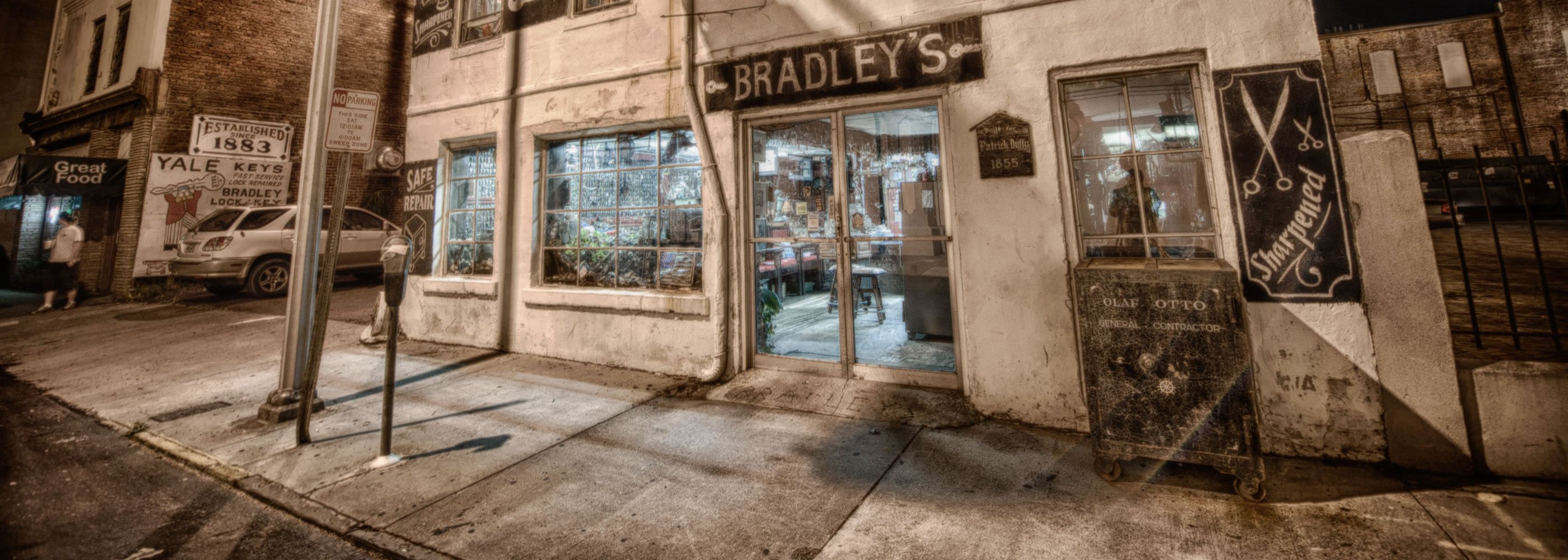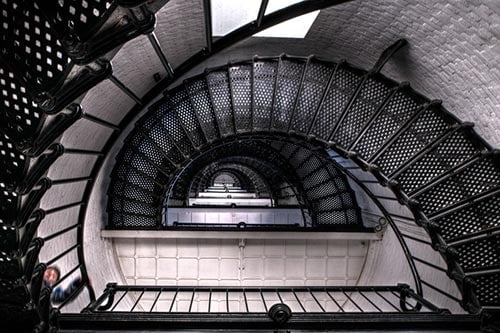
Walking past the Tolomato Cemetery, I wonder if I will see the boy in the tree? Is he watching life pass him by from behind the cold walls of his entombment? Is the story of Bishop Verot true? His bust in front of the mausoleum he resides in stares through my soul.
Less than an acre in mass, the oldest extant Catholic cemetery in the sunshine state with burials dating back to the first Spanish period of 1565-1763, Tolomato Cemetery surely has a story or two to tell.
The former site of Tolomato village (also known as Nuestra Señora de Guadalupe de Tolomato, or Our Lady of Guadalupe of Tolomato), an 18th century Franciscan Indian mission consisting of Guale Indians from Georgia who were converts to Christianity and the Franciscan Monks who ministered to them, Tolomato Cemetery was originally the site of a possible namesake river where the Guale lived. An Indian burial ground was believed to exist before the Catholic Church took it over.
When Great Britain acquired Florida, the village was abandoned. In 1777, the Minorcans came to St. Augustine from New Smyrna after Dr. Andrew Turnbull, a Scottish doctor and British colonist, invited them to colonize from the Mediterranean. Dr. Turnbull treated them horrifically for years, and the Minorcans finally rebelled, fleeing to the safety of the oldest city. The Minorcan colonists and their pastor, Father Pedro Camps, obtained permission from then Governor Patrick Tonyn to adopt the old village as their final resting place.
Tolomato Cemetery was continually used as a Catholic only cemetery by the Minorcan’s descendants and other Catholics through both the Spanish and British regimes and into American control in 1821.
.With the last burial actually taking place in 1892, the cemetery officially closed in 1884 along with Huguenot Cemetery, when all cemeteries within city limits were ordered sealed due to the spread of yellow fever. Two unauthorized burials, one in 1886 and the last in 1892, caused the families of the deceased to incur a fee of $25 for violating the law.
While there are few more than 100 gravemarkers in Tolomato, there is known to be well over 1000 burials within the cemetery gates. Parish death records, which are held at the Diocesan Archives in St. Augustine, confirm their existence. Over Tolomato’s centuries of endurance, the epitaphs and unique features of the headstones and markers have long since deteriorated, but those that are still recognizable have been well preserved.
The occupants of Tolomato Cemetery have come from all over the world; Spain, Cuba, Ireland, Minorca, Italy, Greece, Africa, Haiti, France, the American South and Northeast, even soldiers from both the Confederate and Union sides of the Civil War. The first Sisters of St. Joseph reside here. And some rather significant burials on these hallowed grounds include:
Just beyond the cemetery gates lies a centuries old Live Oak, a splendid climbing tree indeed. Five year-old James P. Morgan spent many days ascending his favorite tree and resting in the crest of its thick, Y-shaped branches.
One fateful day in late November of 1877, James climbed the giant oak, lost his grip, and came crashing down, landing sharply on the consecrated soil of Tolomato Cemetery. His neck snapped and he died instantly, only ten days after his 5th birthday.
The Morgan family had purchased several plots in the cemetery under the giant oak, planning to be together for eternity, but burying little James so prematurely so devastated the Morgans that they could not bare the pain of losing him and abruptly left St. Augustine indefinitely, leaving their son and his isolated headstone behind, never to return again.
Heartbroken and alone in his family’s absence, little James’ spirit still resides at Tolomato near his headstone and the tree from which he fell to his untimely death. Children claim to see a young boy running around happy and laughing, climbing, and sitting in the giant oak watching them intently. Passersby have heckled James exclaiming “get down from there little boy! It is too dangerous for you to be in that tree!”, with no response, only a cold stare.
A controversial photo being passed around the web that looks like a young boy wearing a black tie, sitting in the crest of the oak tree, staring blankly through the branches, is said to be the spirit of James P. Morgan. As a professional photographer of almost two decades, I am always wary of these types of images. I can debunk just about every “light anomaly” or “orb” in a film or digital photograph. I find that shadows play tricks on our minds, especially as a creative individual. Our brains tend to fill in light and shadow with recognizable shapes so we can better process what we are seeing in front of us. I cannot confirm or deny that the image is that of little James and his giant tree, or if it is just our minds filling in the gaps of what we want to believe. Either way, James’ spirit is eager to tell us the story of his short life and find the company of strangers to fill his solitary need.
As an attendee of a holy and prominent funeral in the late nineteenth century, you have certain expectations. You expect that the body has lied in state for a time so that all mourners have the opportunity to pay their respects. You expect the deceased has been taken care of with the utmost concern and consideration. And most of all, you expect that the funeral will go as it invariably does; smoothly, without dramatics, timely, and well...sanitarily.
The funeral for Bishop Verot (the first Roman Catholic Bishop in the diocese of St. Augustine), however, was unfortunately not as well thought out and planned as expected. The Florida heat in the middle of June was scorching, and to keep the Bishop’s body lying in state long enough for mourners to visit, a pit was made in the ground, lined with sawdust and ice, and the bishop’s body inserted.
An expensive iron, face-plated casket was the only option for this well-known, beloved, and studious man; only the best would be afforded to him for all of his work in Florida and beyond. But imagine for a moment what happens to a dead body subjected to intense heat over a period of three days , sort of like bread dough left in the sun for the yeast to rise. Now imagine for a moment, putting that mound of bread dough inside an iron oven that’s been sealed shut with no expanse for air and excessive temperatures. I don’t need to tell you exactly what happened during Bishop Verot’s funeral, but suffice it to say that the funeral-goers left quite abruptly, and the remnants of his body were quickly interred in his final resting place at Tolomato Cemetery.
In the early 19th century, there was a great fear of being buried alive. Great lengths were taken to ensure one’s survival if this dreadful occurrence were to take place, but it came with a price tag. If you were truly believed to be dead, then none such expense would be considered. As was the case for a charming young St. Augustinian woman in 1821.
Colonel Joseph Smith, a decorated war veteran and lawyer, moved to St. Augustine to start a new life. He met a captivating young couple at a party during his first week in the ancient city and they became fast friends. After making arrangements to meet for dinner and exchange pleasantries, the Colonel learned the young woman was suddenly overcome with grave affliction and sorrowfully passed away the following week.
The grief-stricken and anguished husband invited his new-found friend to the funeral, asking him to participate in the family’s custom of delivering the deceased to the cemetery seated in a chair. Hoisted in her elaborately decorated funeral furnishing, the young woman’s body bounced and swayed with every blemish in the dirt road between the church and Tolomato Cemetery with the Colonel’s eyes never leaving this elegantly mournful site.
As the procession passed under the Apopinax tree inside the graveyard, the young woman’s forehead was lacerated by a stray branch, causing a generous amount of blood to leak into her eyes. The Colonel exclaimed that he saw her eyes wince and insisted that she was not in fact, dead. After some convincing, her body was brought back home and several days later, to the astonishment of her entire family, she awoke restfully in her bed. Colonel Smith was honored for saving the young woman’s life and preventing her premature burial.
Six years later, the woman died and was laid in state for nearly a week to make absolutely sure of her final demise. This time the husband declared that they would not pass under the Apopinax tree as his heart could not handle another resurrection of his beloved.
Tolomato Cemetery isn't far from the main area where most tourists congregate, so it is a brief walk - or grab an Uber. We encourage everyone visiting St. Augustine to visit the Tolomato Cemetery - even if you don't have anything paranromal or ghostly happen, it is still a beautiful experience..

St. Augustine's famous haunted Fort

One of St. Augustine's haunted cemeteries

The famous haunted Lighthouse